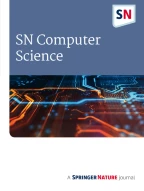Abstract
The increased fraud risk due to the most recent methods of paying with a credit card, such as real-time payments and cards with near-field communication (NFC) capabilities, makes detecting credit card fraud an essential topic of study. Deep learning has shown encouraging results in recent years, whenever it is used to detect credit card fraud. There have been several deep learning-based models presented in this field of research. Still, not all of them have proven to be the most effective because each technique is best used with a particular dataset, and fraudsters constantly refine their methods to evade detection by the systems in place today. This work's primary focus is detecting credit card fraud using an auto-encoder with GRU and LSTM models. This is an efficient mechanism; first, data are passed to auto-encoder without the labels, and after that, the output generated by the auto-encoder is passed to the LSTM model as input with labels to detect fraud.
Similar content being viewed by others
Explore related subjects
Discover the latest articles, news and stories from top researchers in related subjects.Data availability
Information regarding the dataset which is used for this research is mentioned in the Methodology section. The dataset is publicly available.
References
Forough J, Momtazi S. Ensemble of deep sequential models for credit card fraud detection; 2020. Tehran: Computer Engineering Department, Amirkabir University of Technology.
Jeragh M. Combining auto encoders and one class support vectors machine for fraudulant credit card transactions detection; 2018. Kuwait: Computer Engineering Department, Kuwait University, Mousa AlSulaimi, Information Technology Department, Boubyan Bank.
Awoyemi JO, Adetunmbi AO, Oluwadare SA. Credit card fraud detection using machine learning techniques: a comparative analysis; 2017. Akure: Department of Computer Science Federal University of Technology Akure.
Roy A, Sun J, Mahoney R, Alonzi L, Adams S, Beling P. Deep learning detecting fraud in credit card transactions; 2018. IEEE, University of Virginia.
de Sá AGC, Pereira ACM, Pappa GL. A customized classification algorithm for credit card fraud detection; 2018. Computer Science Department, Universidade Federal de Minas Gerais (UFMG), 31270–010, Belo Horizonte, Minas Gerais: Elsevier.
Jurgovskya J, Granitzer M, Ziegler K, Calabretto S, Portier P-E, He-Guelton L, Caelen O. Sequence classification for credit-card fraud detection. New York: Elsevier; 2018.
Makki S, Assaghir Z, Taher Y, Haque R, Hacid M, Zeineddine H. An experimental study with imbalanced classification approaches for credit card fraud detection. IEEE Access 2019;7:93010-22.
Fiorea U, De Santis A, Perla F, Zanetti P, Palmieri F. Using generative adversarial networks for improving classification effectiveness in credit card fraud detection. New York: Elsevier; 2017.
Zhang X, Hana Y, Xua W, Wang Q. HOBA: a novel feature engineering methodology for credit card fraud detection with a deep learning architecture. New York: Elsevier; 2019.
Carcillo F, Le Borgne Y-A, Caelen O, Kessac Y, Oblé F, Bontempi G. Combining unsupervised and supervised learning in credit card fraud detection. New York: Elsevier; 2019.
Jiang P, Zhang J, Zou J. Credit card fraud detection using autoencoder neural network; 2019. Department of Electrical & Computer Engineer, University of Western Ontario.
Zhai J, Zhang S, Chen J, He Q. Autoencoder and its various variants. 2018 IEEE international conference on systems, man, and cybernetics (SMC); 2018. p. 415–19. https://doi.org/10.1109/SMC.2018.00080.
Dey R, Salem FM. Gate-variants of Gated Recurrent Unit (GRU) neural networks, In: 2017 IEEE 60th International Midwest Symposium on Circuits and Systems (MWSCAS), Boston, MA, USA; 2017. p. 1597–1600. https://doi.org/10.1109/MWSCAS.2017.8053243.
Dey R, Salem FM. Gate-variants of gated recurrent unit (GRU) neural networks. 2017 IEEE 60th international midwest symposium on circuits and systems (MWSCAS); 2017. Boston. p. 1597–600. https://doi.org/10.1109/MWSCAS.2017.8053243.
Hochreiter S, Schmidhuber J. Long short-term memory. Neural Comput. 1997;9:1735–80. https://doi.org/10.1162/neco.1997.9.8.1735.
Sherstinsky A. Fundamentals of recurrent neural network (RNN) and long short-term memory (LSTM) network. Phys D Nonlinear Phenom. 2020;404: 132306. https://doi.org/10.1016/j.physd.2019.132306.
Hossein A, Mostafa S, Mohsen Y. An optimized model using LSTM network for demand forecasting. Comput Ind Eng. 2020;143: 106435. https://doi.org/10.1016/j.cie.2020.106435. (ISSN 0360-8352).
Liu Y, Zhou Y, Wen S, Tang C. A strategy on selecting performance metrics for classifier evaluation. Int J Mob Comput Multimed Commun. 2014;6:20–35. https://doi.org/10.4018/IJMCMC.2014100102.
Awoyemi JO, Adetunmbi AO, Oluwadare SA. Credit card fraud detection using machine learning techniques: a comparative analysis. 2017 international conference on computing networking and informatics (ICCNI); 2017. Lagos, Nigeria. p. 1–9. https://doi.org/10.1109/ICCNI.2017.8123782.
Author information
Authors and Affiliations
Corresponding author
Ethics declarations
Conflict of Interest
The authors declare that they have no known competing financial interests or personal relationships that could have appeared to influence the work reported in this paper.
Additional information
Publisher's Note
Springer Nature remains neutral with regard to jurisdictional claims in published maps and institutional affiliations.
This article is part of the topical collection “Machine Intelligence and Smart Systems” guest edited by Manish Gupta and Shikha Agrawal.
Rights and permissions
Springer Nature or its licensor (e.g. a society or other partner) holds exclusive rights to this article under a publishing agreement with the author(s) or other rightsholder(s); author self-archiving of the accepted manuscript version of this article is solely governed by the terms of such publishing agreement and applicable law.
About this article
Cite this article
Sehrawat, D., Singh, Y. Auto-Encoder and LSTM-Based Credit Card Fraud Detection. SN COMPUT. SCI. 4, 557 (2023). https://doi.org/10.1007/s42979-023-01977-w
Received:
Accepted:
Published:
DOI: https://doi.org/10.1007/s42979-023-01977-w
